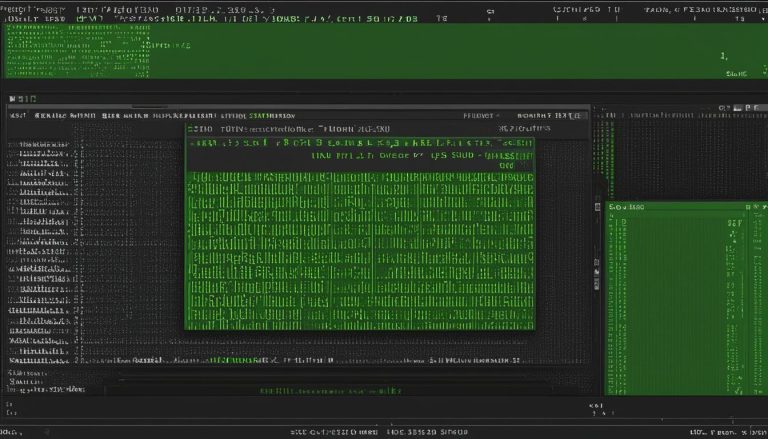Greetings, fellow tech enthusiasts! Today, I want to delve into the world of Linux and explore a fascinating distribution known as Antergos Linux. Whether you’re a seasoned Linux user or just getting started, understanding the fundamentals of Antergos will open up new possibilities for your computing experience.
Antergos Linux is a powerful operating system that originated from the Arch Linux family. Developed by Alexandre Filgueira and his team, it made its debut on May 7, 2012, and quickly gained recognition for its sleek and contemporary design.
This Linux marvel offers a range of features that cater to a broad spectrum of users. Its versatility lies in the ability to choose from multiple desktop environments, such as GNOME, Cinnamon, Xfce, and more. Whether your visual preferences lean towards sophistication or simplicity, Antergos has you covered.
Despite being discontinued, Antergos remains a favorite among Linux enthusiasts due to its modern and powerful features. Now, let’s dive deeper into the incredible world of Antergos and its many offerings!
Key Takeaways:
- Antergos Linux is a discontinued distribution based on Arch Linux.
- It offers a variety of desktop environments to suit different user preferences.
- Antergos is known for its modern, elegant, and powerful features.
- Although it is no longer officially supported, the Antergos community still provides resources and support.
- Antergos Linux provides a user-friendly installation process.
Features of Antergos
Antergos, a popular Linux distribution based on Arch Linux, offered a range of features that set it apart from other distributions. Let’s explore some of the key features that made Antergos a favorite among users.
User-Friendly Installer
Antergos boasted a fast and user-friendly installer, making the installation process a breeze. Whether you were a beginner or an experienced user, the installer guided you through the steps, ensuring a smooth and hassle-free installation experience. This user-friendly approach made Antergos accessible to users of all skill levels.
Rolling Release Model
One of the standout features of Antergos was its use of a rolling release model. This meant that users had access to the latest software updates without the need for reinstalling the entire operating system. With a rolling release, Antergos offered the advantage of staying up-to-date with the latest features, security patches, and bug fixes.
Multiple Desktop Environments
While GNOME was the default desktop environment in Antergos, users had the freedom to choose from a wide variety of other popular desktop environments. Whether you preferred the simplicity of Xfce, the elegance of Cinnamon, or the customization options of KDE Plasma, Antergos had you covered. This flexibility allowed users to personalize their desktop and create an environment that suited their preferences.
| Key Features of Antergos | Description |
|---|---|
| User-Friendly Installer | Antergos offered a fast and user-friendly installer, simplifying the installation process for users. |
| Rolling Release Model | With a rolling release model, Antergos provided users with the latest software updates without the need for reinstalling the entire operating system. |
| Multiple Desktop Environments | Antergos allowed users to choose from various desktop environments, giving them the freedom to customize their desktop experience. |
Overall, Antergos’s range of features made it a popular choice among Linux enthusiasts. Its user-friendly installer, rolling release model, and support for multiple desktop environments provided a modern, elegant, and powerful experience for users.
Installation Guide for Antergos
Installing Antergos is a straightforward process that can be done using either a DVD or a USB drive. Here’s a step-by-step guide:
Method 1: Installing from a DVD or USB Drive
- Download the latest ISO image of Antergos from the official website.
- Burn the ISO image to a DVD or create a bootable USB drive using tools like Etcher or Rufus.
- Insert the DVD or connect the USB drive to your computer and restart it.
- During the boot process, access the boot menu by pressing the appropriate key (usually F12 or Esc) and select the DVD or USB drive as the boot device.
- Once the Antergos live environment loads, click on the “Start Antergos Live” option.
- On the desktop, double-click the “Install It” icon to start the installation process.
- Follow the on-screen instructions to select your language, location, preferred desktop environment, disk partitioning, and user account details.
- After the installation is complete, you can reboot your system and start using Antergos!
Method 2: Installing in a Virtual Machine
- Download and install Oracle Virtualbox on your computer.
- Create a new virtual machine and configure its settings.
- Select the downloaded Antergos ISO image as the virtual machine’s boot device.
- Start the virtual machine and follow the same steps as mentioned in Method 1 to complete the installation process.
By following these installation methods, you can easily set up Antergos on your computer or within a virtual environment.
Antergos System Requirements
Before installing Antergos, it is important to ensure that your system meets the minimum requirements to run the operating system smoothly. While Antergos is known for its low system requirements, having a system that exceeds the minimum specifications can enhance your overall experience.
Minimum Recommended System Requirements
To run Antergos effectively, it is recommended to have a system with at least:
- A 1 GHz processor
- 1 GB of RAM
- 20 GB of disk space
These specifications should be sufficient for basic usage of Antergos. However, if you want better performance and faster processing, it is advisable to have a more powerful system with:
- A faster processor
- At least 2 GB of RAM
- More disk space
The specific requirements may vary depending on the desktop environment and additional software that you choose to install.
Antergos vs Other Linux Distributions
When comparing Antergos to other Linux distributions, several key differences and advantages stand out. One of the main factors that sets Antergos apart is its foundation on Arch Linux, which offers a rolling release model. This means that users have access to the latest software updates, ensuring they can stay up-to-date with the newest features and improvements in the Linux community.
Another notable feature of Antergos is its user-friendly installer. While some Linux distributions may have complex installation processes, Antergos simplifies the experience with a fast and straightforward installer. This makes it more accessible for beginners who may not have extensive technical knowledge.
Furthermore, Antergos offers a wide range of desktop environment options. While GNOME is the default choice, users can easily install and switch to other popular desktop environments such as Cinnamon, Xfce, and many more. This flexibility allows users to customize their Linux experience to suit their personal preferences and workflow.
Antergos provides a modern, elegant, and powerful experience for Linux users, making it an attractive choice for those seeking a user-friendly and versatile operating system.
Overall, Antergos offers a unique combination of features, including a rolling release model, a user-friendly installer, and the ability to choose from various desktop environments. While it may no longer receive official updates, Antergos remains a popular and respected Linux distribution that has left its mark in the Linux community.
Comparison Table: Antergos vs Other Linux Distributions
| Feature | Antergos | Other Linux Distributions |
|---|---|---|
| Rolling Release Model | Yes | Varies |
| User-Friendly Installer | Yes | Varies |
| Desktop Environment Options | Multiple choices | Varies |
| Official Updates | Discontinued | Varies |
Antergos Support and Community
Although Antergos has been discontinued, there is still a supportive community and resources available for users. The official Antergos website may no longer be active, but there are forums and online communities where users can seek support and share their experiences. These forums allow users to ask questions, troubleshoot issues, and connect with other Antergos enthusiasts. Additionally, users can find online documentation and tutorials to help them navigate the operating system. While the official support for Antergos may have ended, the community support continues to thrive.
The Antergos forum is a valuable resource for users seeking assistance and guidance. Here, users can post their queries, share their knowledge, and engage in discussions with fellow Antergos users. The forum provides a platform for troubleshooting technical issues, exploring customization options, and discovering new tips and tricks to enhance the Antergos experience.
Furthermore, the Antergos community is known for its friendly and welcoming atmosphere. Whether you are a beginner or an experienced Linux user, you can find support and guidance from fellow community members who are passionate about Antergos. The community often organizes events, meetups, and workshops to promote knowledge sharing and collaboration among its members.
“The Antergos community has been incredibly helpful in my journey with the operating system. Whenever I had a question or faced an issue, I could rely on the forum to provide me with timely solutions and valuable insights. The sense of camaraderie within the community is truly inspiring, and I’m grateful to be a part of it.”
Antergos Support Resources:
- Antergos Forum: The official forum where users can seek support, ask questions, and share experiences.
- Online Documentation: Comprehensive documentation and guides available online to aid users in navigating Antergos.
- Tutorials and How-Tos: Online tutorials and how-to guides for various Antergos-related topics, making it easier for users to understand and utilize the operating system.
- Community Events and Meetups: Opportunities to connect with fellow Antergos users, attend workshops, and exchange knowledge.
With the active community support and available resources, users can continue to explore and enjoy the benefits of Antergos, despite its discontinuation.
Conclusion
After thoroughly exploring the features and community support of Antergos, I can confidently say that it remains a commendable Linux distribution, despite its discontinuation. Antergos, based on Arch Linux, provided users with a modern, elegant, and powerful operating system. The installation process was straightforward, and the option to choose from multiple desktop environments allowed for a personalized experience.
Although official updates for Antergos have ceased, the supportive community and available resources ensure that users can still seek assistance and share their experiences. Online forums provide a platform for users to troubleshoot issues, ask questions, and connect with fellow Antergos enthusiasts. In addition, users can find online documentation and tutorials to enhance their understanding of the operating system.
While it is unfortunate that Antergos is no longer actively developed, its impact on the Linux community remains significant. Its unique combination of features, user-friendly installer, and the availability of various desktop environments set it apart from other Linux distributions. For users seeking a powerful, customizable, and aesthetically pleasing Linux experience, Antergos is worth considering.
FAQ
What is Antergos?
Antergos is a discontinued Linux distribution based on Arch Linux.
What are the features of Antergos?
Antergos offers essential pre-installed utilities, follows a rolling release model, supports multiple desktop environments, is multilingual, and has a fast and user-friendly installer.
How do I install Antergos?
You can either download the ISO image, create a bootable DVD or USB drive, and boot your system using it, or create a virtual machine using Oracle Virtualbox and boot it with the ISO image. The installation process will guide you through the necessary steps.
What are the system requirements for Antergos?
The minimum recommended system requirements for Antergos include a 1 GHz processor, 1 GB of RAM, and 20 GB of disk space. However, it is recommended to have a faster processor, at least 2 GB of RAM, and more disk space for better performance.
How does Antergos compare to other Linux distributions?
Antergos stands out with its rolling release model, access to the latest software updates, user-friendly installer, and availability of multiple desktop environments.
Is there support available for Antergos?
While the official support for Antergos has ended, there are still supportive communities, forums, and online resources where users can seek assistance and connect with other Antergos users.
What is the conclusion about Antergos?
Antergos is a popular Linux distribution known for its modern, elegant, and powerful features. Despite being discontinued, it continues to have a dedicated community and leaves a positive mark in the Linux community.
Hi, I’m Mark, the author of Clever IT Solutions: Mastering Technology for Success. I am passionate about empowering individuals to navigate the ever-changing world of information technology. With years of experience in the industry, I have honed my skills and knowledge to share with you. At Clever IT Solutions, we are dedicated to teaching you how to tackle any IT challenge, helping you stay ahead in today’s digital world. From troubleshooting common issues to mastering complex technologies, I am here to guide you every step of the way. Join me on this journey as we unlock the secrets to IT success.


